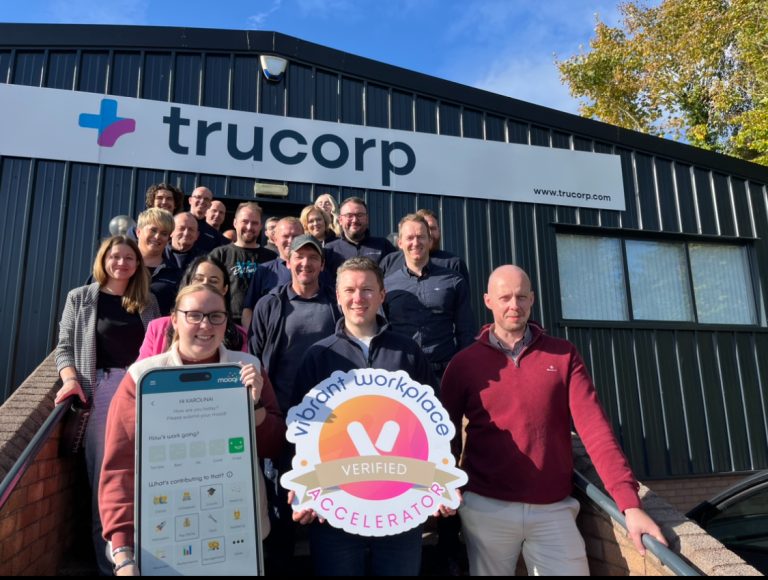The technology sector in Northern Ireland is a burgeoning industry, experiencing unprecedented growth and attracting global attention. However, beneath the shiny veneer of progress, a critical problem persists: a glaring lack of gender diversity.
According to the NI Quarterly Employment Survey, females accounted for just 27% of employees in software industries in late 2022, highlighting a significant gender imbalance in the sector.
The business case for a more inclusive workplace
Workplace gender diversity is more than just a symbolic acknowledgement of equity; it is fundamental to the health and success of individual organizations and a sustainable tech sector in general.
Achieving gender diversity in the tech sector offers a multitude of benefits, some of which are:
1. Enhanced Innovation: A diversity of perspectives can foster unique solutions to complex problems. Women, having different experiences and viewpoints, can bring new ideas to the table, driving innovation.
2. Better Decision Making: Diverse teams often make better decisions. According to a report by Cloverpop, inclusive teams make decisions twice as fast with half the meetings, and their decisions deliver 60% better results.
3. Increased Profitability: A report by McKinsey & Company reveals that companies in the top quartile for gender diversity are 15% more likely to have financial returns above their respective national industry medians.
4. Improved Product Design: With women making up approximately half of the global population, their absence in the design and creation process of tech products can result in missed needs and opportunities. When the tech industry mirrors its customer base, it’s better equipped to understand and meet their needs.
5. Reduced Employee Turnover: Companies that prioritize diversity and inclusion tend to have better employee engagement, satisfaction, and retention rates. When employees feel valued and included, they’re more likely to stay with the company. In a recent survey by Sensu Insights, almost one-third (31%) of Generation Z, individuals aged between 16 to 24, favour employers who actively emphasize diversity and inclusion in their teams. This sentiment contrasts with the older generations: only 11% of Generation X (ages 42 to 57) and 13% of millennials (ages 26 to 41) express the same preference.
6. Broader Talent Pool: By embracing gender diversity, tech companies can widen their talent pool. This is increasingly important in Northern Ireland where the demand for skilled tech professionals exceeds the supply.
In essence, the benefits of gender diversity in the tech sector align with the overall growth and success of the industry. As such, the drive towards a more diverse and inclusive industry is not only a social obligation but a business imperative.
Identifying & removing systemic barriers
The underrepresentation of females in the tech sector is not a simple issue with a single cause. It is the result of systemic and structural issues that persist in society and the industry, from education to workplace practices.
1. Societal Stereotypes: The stereotype of tech and STEM fields as ‘masculine’ can discourage girls from pursuing these subjects from a young age. This bias can come from parents, teachers, media, and peers, leading to fewer females entering and staying in the tech sector.
2. Education Gap: Education systems often fail to encourage and support girls in STEM subjects. This education gap can then extend into higher education and career choices, leading to an underrepresentation of women in tech.
Women are underrepresented in STEM industries. Only 15% of women study core STEM subjects compared to 36% of men, and are particularly underrepresented in computer science (16%). Despite women making up almost half Northern Ireland’s workforce, only 11% of engineers are female.nEqualityNi
3. Lack of Role Models: The scarcity of women in tech, especially at leadership level, means there are fewer role models for young women and girls. Without relatable examples, it’s harder for females to imagine themselves in similar roles.
Women in STEM leadership roles, i.e. management, directorships and as senior officials remain underrepresented across all STEM fields (17% average). A critical point in the STEM women’s career path arises during their mid-late 40s; representation at higher levels drop by 6% from 22% and continues to shrink until, by retirement, only 6% of science, research, engineering and technology professionals in NI are women. EqualityNi
4. Unconscious Bias: Unconscious biases held by employers, recruiters, and colleagues can disadvantage women in hiring, promotion, and day-to-day work environments. This can lead to a lower presence of women in the tech sector, especially in leadership roles.
5. Workplace Culture: Tech workplaces are often male-dominated, and the culture can be unwelcoming or even hostile to women, leading to feelings of isolation and increased likelihood of leaving the industry.
6. Work-Life Balance: The tech industry often demands long hours and high commitment, which can conflict with societal expectations for women around caregiving and family responsibilities.
7. Pay Inequity: Despite equal pay laws, women in tech often earn less than their male counterparts. This pay gap can discourage women from entering or remaining in the industry.
To address these systemic issues, concerted efforts are needed from all levels of society and across sectors: schools need to encourage girls in STEM, businesses need to challenge biases and foster inclusive cultures, and policies should ensure fair treatment and opportunities for women in the tech industry.
Conclusion: Building a More Inclusive Future
The lack of gender diversity in Northern Ireland’s tech sector is not just a problem for women – it is a problem for the industry and society as a whole. When women are underrepresented in tech, we all miss out on the benefits that a diverse workforce brings. From increased innovation to better products, gender diversity is not merely a matter of fairness; it is a driver of success.
Creating an inclusive technology sector requires concerted effort from all stakeholders. It means actively recruiting women and encouraging girls to study STEM subjects. It means promoting a workplace culture that respects and values the contributions of women. And most importantly, it means acknowledging and addressing the systemic barriers that keep women from fully participating in the tech industry, including pay inequity.
Northern Ireland has the opportunity to lead the way in building a tech industry that is as diverse as the society it serves. It’s time to turn this opportunity into reality.





